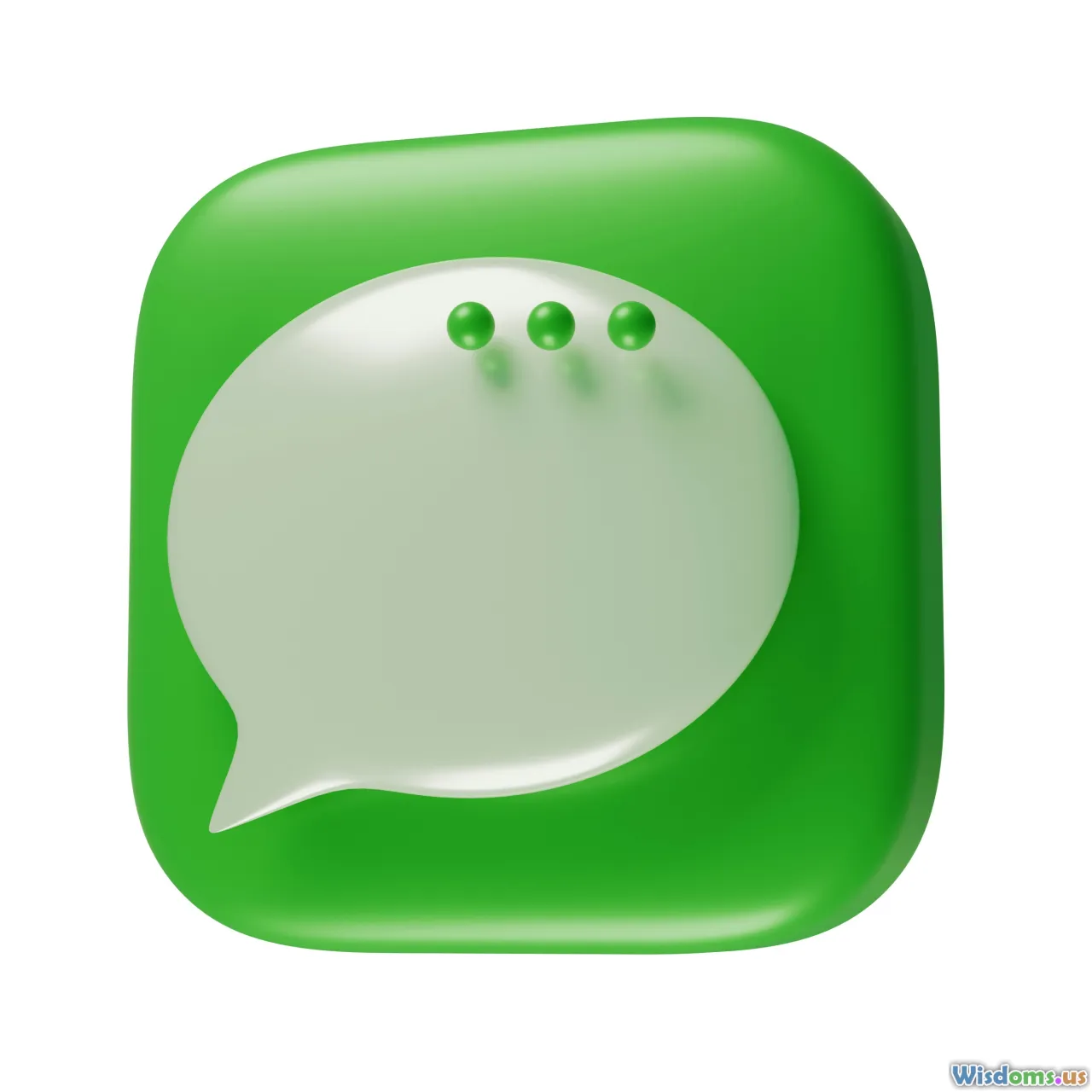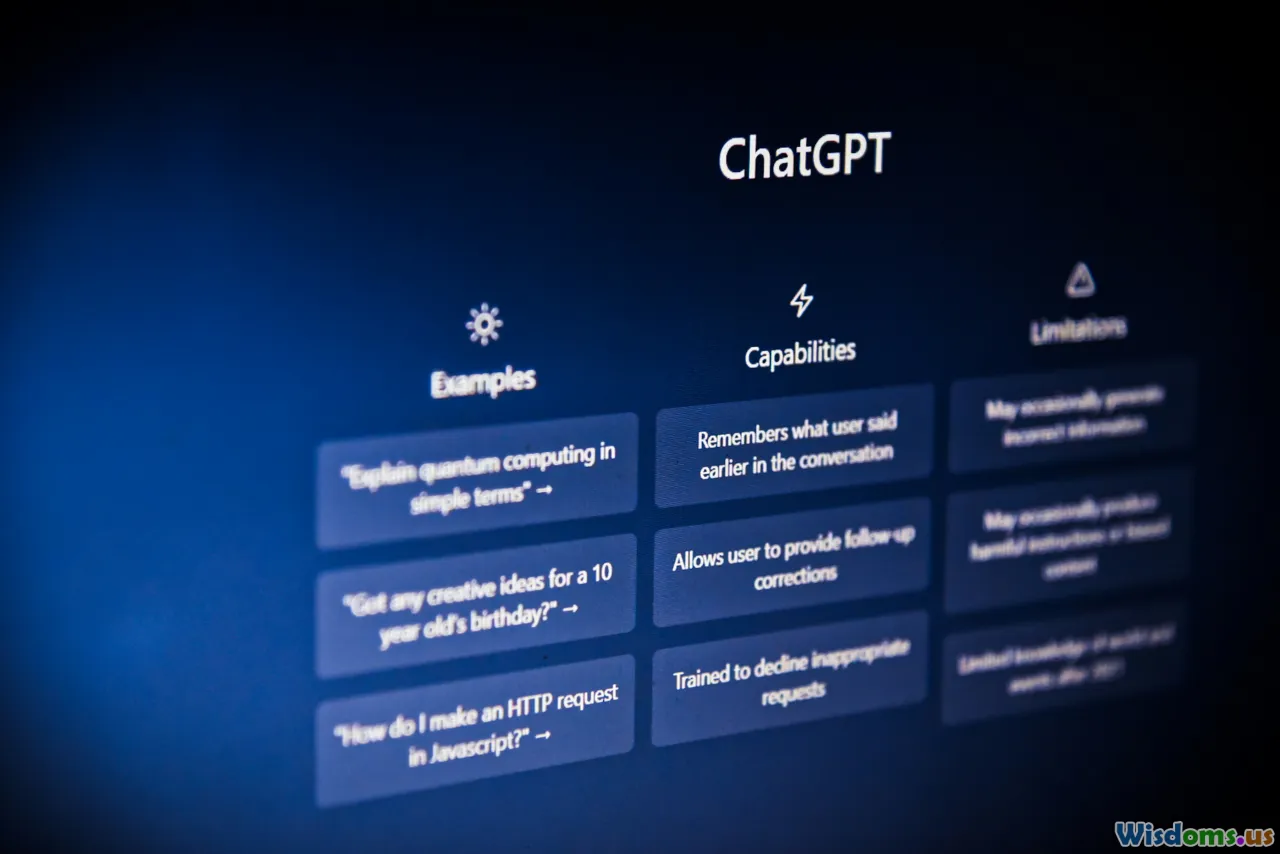
Comparing Chatbot Platforms for Effective Online Engagement
15 min read A detailed comparison of top chatbot platforms to help businesses achieve effective online customer engagement and improved service. (0 Reviews)
Comparing Chatbot Platforms for Effective Online Engagement
As digital interactions grow in volume and complexity, businesses are under pressure to provide timely, personalized responses to users. Chatbots have become integral to online engagement, from customer service and lead generation to support and sales. Yet, choosing the right chatbot platform is crucial, as features, flexibility, and costs vary widely.
This article explores and compares leading chatbot platforms, shedding light on their strengths and quirks. Whether you're a small enterprise or a multinational, you'll find practical insights, real-world examples, and actionable guidance to select a solution that best fits your needs.
The Value of Chatbot-Driven Engagement

Chatbots are no longer just novelty widgets but vital touchpoints in user journeys. When implemented well, bots increase customer satisfaction, extend brand reach, and reduce operational costs.
Consider Sephora's virtual assistant on Facebook Messenger: It allows users to book in-store appointments and receive personalized product recommendations. This led to an 11% increase in appointment bookings. Another standout is KLM Royal Dutch Airlines, whose "BlueBot" provides flight documentation, check-in directories, and updates, serving over 1.7 million messages annually.
According to Salesforce, 69% of consumers prefer using chatbots for quick communication with brands. The increasing sophistication of natural language processing (NLP) and AI integrations has allowed chatbots to offer far more than canned responses, enhancing the depth of digital engagement.
Primary Types of Chatbot Platforms

Before diving into platform comparisons, it's useful to understand distinct flavors of chatbots:
- Rule-Based Bots: Operate on keyword recognition and predefined decision trees. Ideal for FAQs and predictable queries.
- AI-Powered Bots: Utilize machine learning and NLP to interpret intent and provide more nuanced, non-linear responses. Suitable for support, sales, and conversational commerce.
- Hybrid Bots: Blend rule-based flows with AI to refine responses and escalate conversations to human agents as needed.
For instance, Lidl's Winebot Margot leverages a hybrid model, answering customer queries about wine and recommending food pairings, but escalates complex queries to staff. Each platform supports various bot types with varying degrees of customization.
Top Chatbot Platforms: Key Features and Differentiators

Let's analyze six of the most popular chatbot platforms, each widely adopted for online engagement yet differing in features, integrations, and target audiences.
1. Dialogflow (by Google)
- Strengths: Market-leading NLP and machine learning; integrates with Google Cloud ecosystem; supports multilingual bots; easy to connect across channels (WhatsApp, Slack, Messenger, etc.).
- Noteworthy Example: Domino’s Pizza UK uses Dialogflow to enable end-to-end pizza ordering via Facebook Messenger.
- Drawbacks: More technical; initial setup often requires familiarity with intents, entities, and webhooks.
- Ideal For: Businesses seeking scalability or already invested in Google services; developers or technical teams.
2. Microsoft Bot Framework
- Strengths: Enterprise-grade; robust integration with Microsoft 365, Azure, and Teams; open-source SDKs; advanced voice support via Speech Services.
- Example: UPS’ virtual assistant leverages Microsoft Bot Framework to handle address changes, shipment tracking, and shipping rate queries across web and voice channels.
- Drawbacks: Advanced features may be overkill for small businesses; requires setup in Azure portal.
- Ideal For: Organizations in the Microsoft ecosystem; those looking for deep channel integration and security.
3. Chatfuel
- Strengths: No-code interface; quick to build for Facebook Messenger; built-in analytics; useful for marketing automation and lead generation.
- Example: Adidas deployed a seasonal Messenger bot via Chatfuel, automating product recommendations and information for football fans, resulting in a significant campaign engagement lift.
- Drawbacks: Limited functionality outside Facebook Messenger; complex AI requires custom development.
- Ideal For: Marketers, small businesses, or beginners aiming for fast deployments on Messenger platforms.
4. ManyChat
- Strengths: Specializes in Messenger, Instagram, and WhatsApp bots; drag-and-drop flow builder; native integrations with CRMs and e-commerce tools.
- Example: LEGO’s Christmas campaign on Facebook Messenger utilized ManyChat, driving click-through rates nearly three times higher than email.
- Drawbacks: Focuses on marketing and customer engagement use-cases; logic building options can get opaque at scale.
- Ideal For: E-commerce stores; direct-to-consumer brands focused on social channel engagement.
5. Intercom
- Strengths: Combines live chat, chatbots, and help desk into a unified product; personalized, targeted messages; advanced bot routing to customer service agents.
- Example: Atlassian uses Intercom to manage complex support inquiries by answering routine questions and assigning specialist requests to human agents, reducing response times.
- Drawbacks: Higher price point; best value when using the whole Intercom suite.
- Ideal For: SaaS and B2B companies emphasizing post-sales engagement and proactive support.
6. Drift
- Strengths: Pioneered conversational marketing; strong AI for qualifying leads; integrates with calendars and CRMs; robust analytics.
- Example: Snowflake, a cloud data platform, implemented Drift bots to book demos and drip-feed resources, shortening their sales cycle.
- Drawbacks: Sales-centric; less flexible for complex customer support use-cases.
- Ideal For: Growth-driven companies focused on B2B lead generation and sales funnel optimization.
Essential Capabilities to Consider

Every business has unique requirements; however, the following features appear most often in effective chatbot deployments:
- Multichannel Deployments: Ability to publish bots across web, apps, messaging, and social (e.g., WhatsApp, Facebook Messenger).
- NLP and Intent Recognition: The AI's ability to discern the user's real intent and respond accordingly. Dialogflow and Microsoft Bot Framework set the gold standard here.
- Conversational Memory: Retaining context over extended sessions, essential for complex support discussions and repeat users.
- Seamless Human Handover: Smoothly transferring users from bots to live agents when necessary (Intercom and Microsoft Bot Framework excel at this).
- Customization and Integration: APIs and plugins with CRM, e-commerce, Help Desk, and analytics tools.
- Analytics and Reporting: Actionable dashboards that surface conversation drop-offs, user satisfaction, and engagement metrics.
Case in point: When Nordstrom implemented a chatbot as part of its customer engagement stack, analytics revealed that 44% of repeat customer inquiries could be resolved fully via the bot, drastically freeing up human resources.
Costs and ROI: What to Expect

Pricing models across chatbot platforms vary from freemium to enterprise contracts, typically influenced by conversation volume, AI features, and integration depth.
- Freemium Platforms: Chatfuel and ManyChat offer basic templates for free, charging for advanced features or message volumes.
- Subscription-Based: Intercom and Drift price by agent seat, monthly users, or proprietary metrics.
- Usage-Based / API Pricing: Platforms like Dialogflow and Microsoft charge per interaction, API request, or minute of conversation.
The real ROI often materializes as a combination of increased lead conversion, shorter sales cycles, 24/7 support, and operational cost reduction. For example, Vodafone Italy's use of a conversational assistant resulted in a reported 5 million customer conversations handled annually, reducing call center costs by around 25%.
Tip: Start with a pilot to measure conversation volumes, then compare platform costs versus projected savings or sales uplift.
Building and Scaling a Chatbot: Steps to Success

Implementing a chatbot involves more than picking a platform. Here is a step-by-step approach to maximize your project's impact:
1. Define Clear Objectives
Specify whether your bot will serve support, sales, or lead gen; clarify success metrics such as deflection rate or conversion uplift.
2. Map User Journeys and Scenarios
Lay out conversation paths and collect actual user queries—real transcripts are invaluable for bot training and refinement. Tools like Dialogflow and ManyChat offer templates to bootstrap this process.
3. Design Conversational Flows
Create intent trees for common queries. Use quick replies, carousels, or multimedia to clarify next steps and minimize ambiguity.
4. Select Technology and Channel
Base decisions on where your audience interacts (web, WhatsApp, Messenger) and which integrations are essential (CRM, knowledge base).
5. Train the Bot and Test Extensively
Test the bot with common, complex, and even adversarial questions. Iterate flows using feedback and analytics.
6. Monitor, Update, and Improve
Set regular reviews of bot analytics. Update content and capabilities according to new products, FAQs, or campaign goals. High-performing businesses treat the chatbot not as a one-off project, but as a dynamic, evolving channel.
Real-World Implementation Pitfalls (and How to Avoid Them)

Setting up your first chatbot can offer quick wins—but also brings unexpected challenges:
- Over-Automation: Bots that attempt to answer every question frustrate users when they hit their limits. Build explicit "live agent" paths or escalations into flows.
- Inflexible Scripting: Rigid, linear trees can mishandle natural conversation styles. Hybrid platforms or sophisticated NLP reduces drop-offs.
- Neglecting Updates: Bots with outdated knowledge bases can deliver inaccurate information. Schedule regular content audits.
- Poor Channel Selection: Rolling out a Messenger bot may miss your audience if 70% of your users prefer WhatsApp or website chat.
Consider the downfall of several retailers during Black Friday 2023: overloaded, untested bots led to viral complaints and lost sales. Regular load tests and fallback scenarios are invaluable.
Future Trends in Chatbots and Online Engagement

Chatbot technology and the broader field of conversational AI are moving fast. What should businesses anticipate?
- AI-Driven Personalization: With advances in sentiment analysis, chatbots will further adapt responses to user mood, history, and buying intent.
- Voice-First Assistants: As the line between web chat and voice assistance (think Alexa or Google Assistant) blurs, platforms with robust Speech-to-Text and Text-to-Speech will offer broader access.
- Omnichannel Orchestration: Unified platforms will manage conversations fluidly across text, email, social, and even in-store kiosk experiences.
- Seamless Human-Bot Collaboration: Expect smarter triage—where bots tee up context and customer data so agents resolve complex issues faster.
An emerging example is Bank of America's "Erica", which combines text and voice support, guides users through financial management, and has driven nearly 1 billion client interactions as of 2024.
Effective online customer engagement no longer means merely deploying a live chat window. The right chatbot platform can become a linchpin for lowering costs, delighting users, and scaling your operations. Analyze platforms against your goals, pilot thoughtfully, and remember: the most successful bots are those treated as evolving, data-driven digital team members—improving with every conversation.
Rate the Post
User Reviews
Other posts in Digital Marketing
Popular Posts














